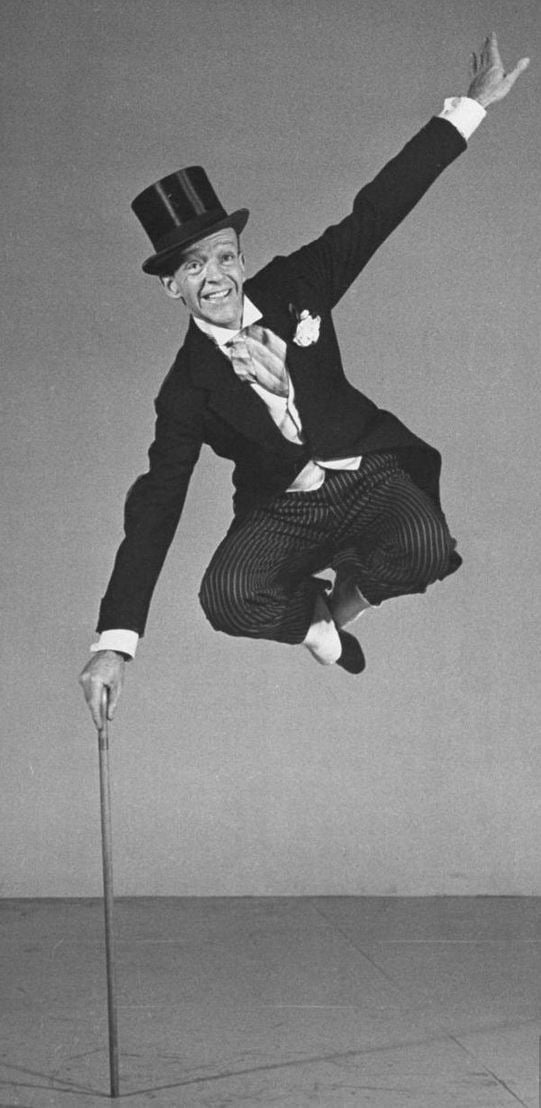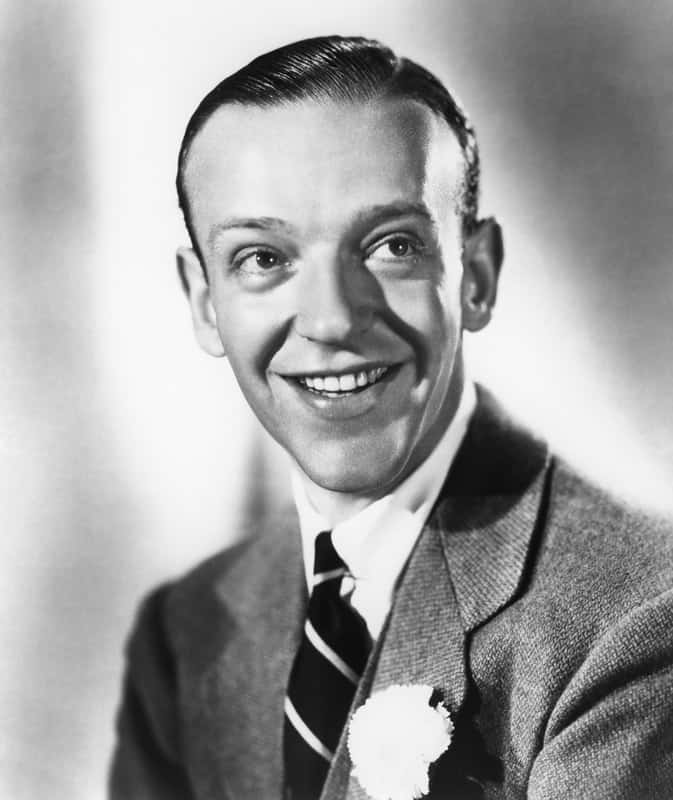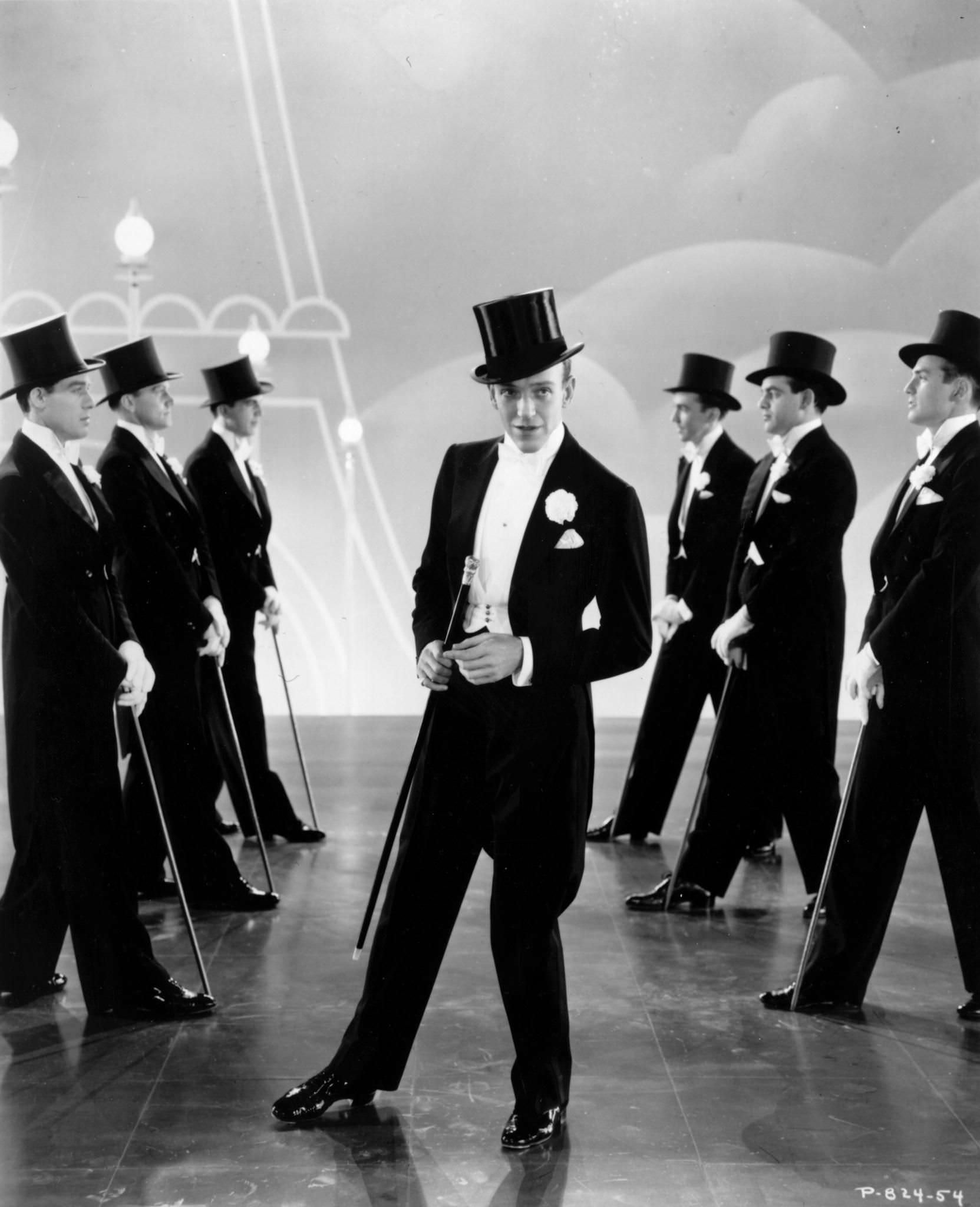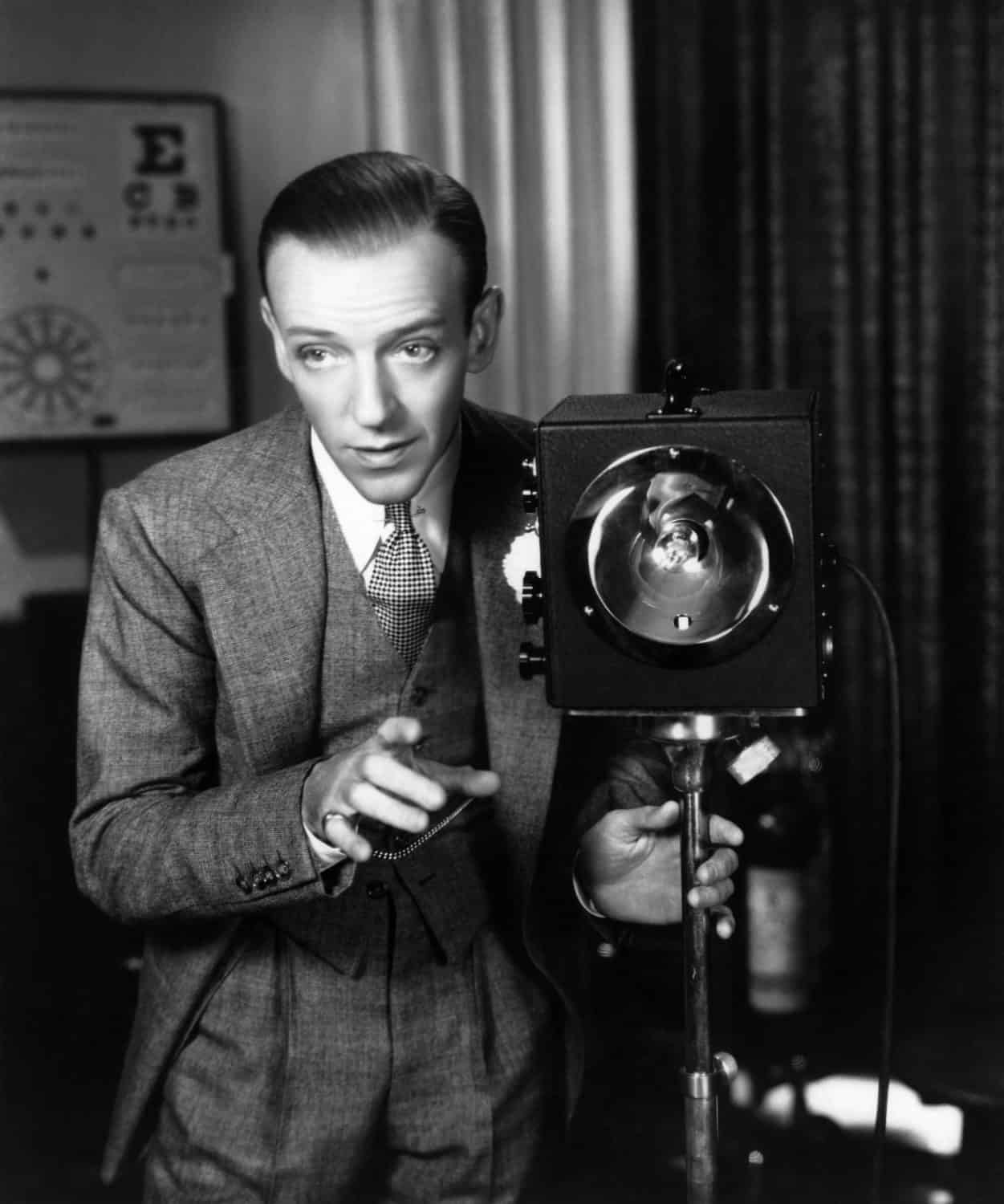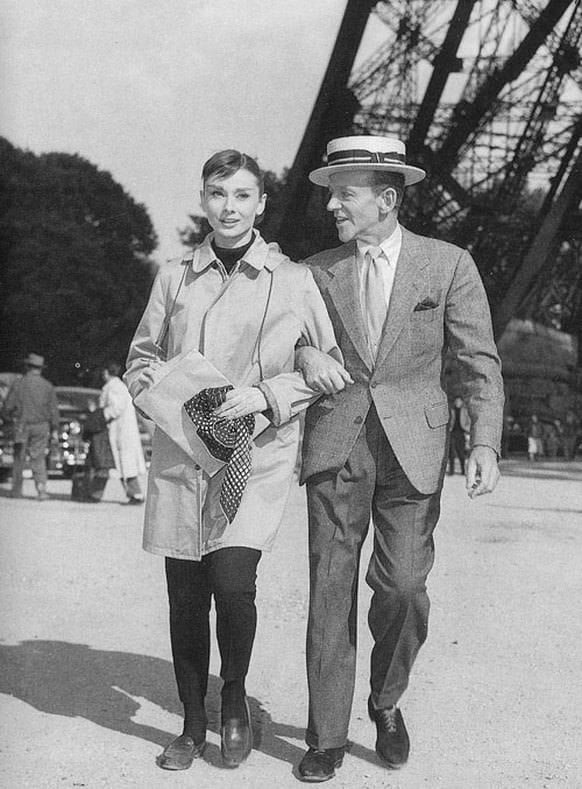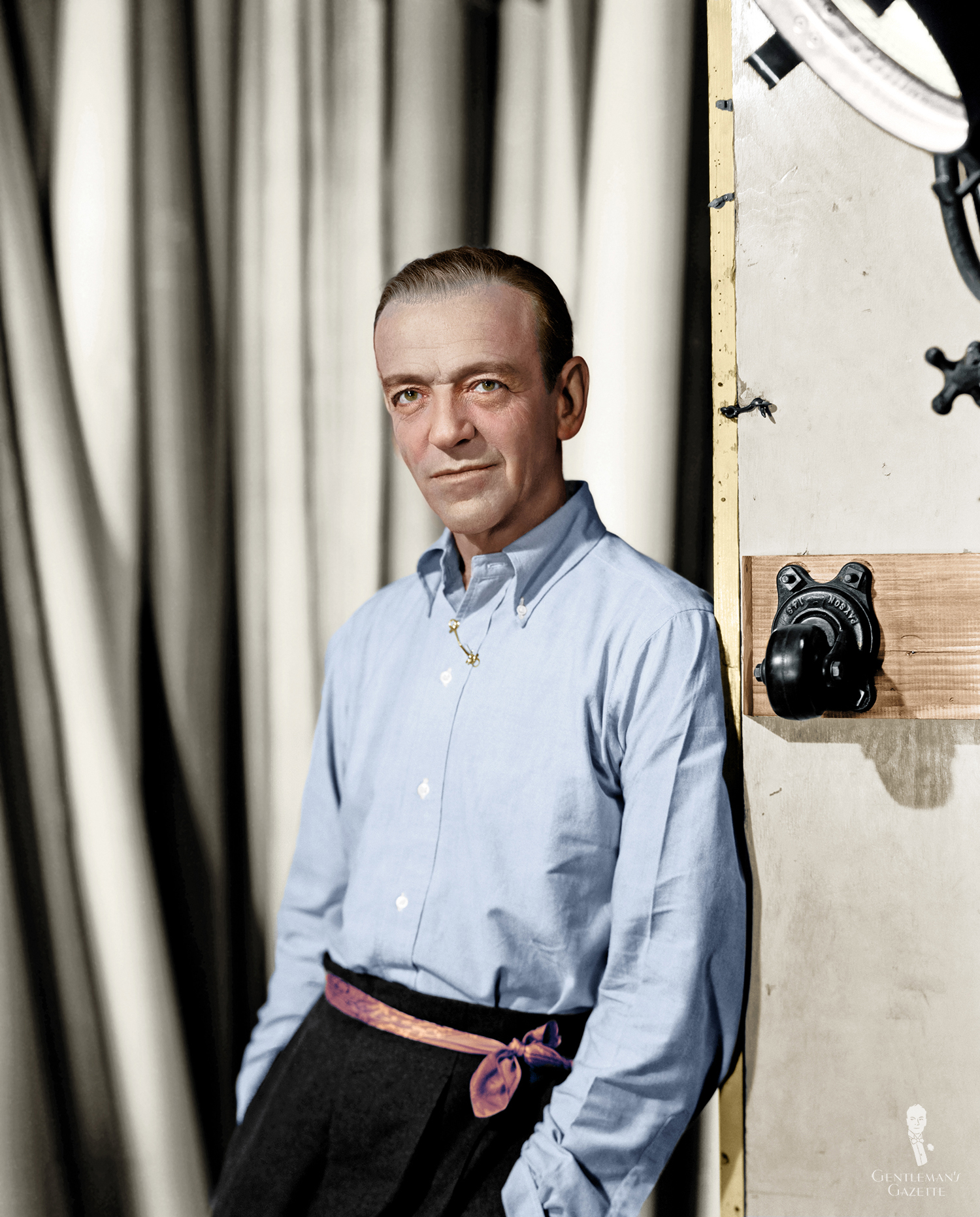In todays installment of our Gentlemen of Style series, we bring you the Hollywood fashion icon, Fred Astairewho, by many measures, was an unlikely recipient of fame.
Perhaps no other figure in the history of American cinema did as much to define the spirit of the musical as did Fred Astaire. He is remembered primarily as a dancerand rightly so, as his supremely tasteful blend of tap and ballroom styles, with a dash of ballet, meant that he is often seen as Americas most consummate film dancer. His only real rival for that title is a contemporary of his, Gene Kelly. He was also a distinctive singer, and he introduced many of the songs now part of the pantheon known collectively as The Great American Songbook. His acting style showcased a blend of optimistic insouciance that was the ideal of American cinema at the time. But in addition to all this (and our primary focus here): his impeccable style.
Fred Astaires Early Years
He was born Frederick Emanuel Austerlitz on May 10th, 1899 in Omaha, Nebraska. When Freds older sister, Adele, began to show a natural talent for dancing, both of the children began pursuing the art. Although Fred refused to take dance lessons at first, he was easily able to mimic his sisters movements, showing his natural talent. Also, he took up piano, accordion, and clarinet, showing that he was equally adept as a musician.
The family moved to New York in 1905, and both of the children would start receiving formal training at this point. Also around this time, the family name was changed from Austerlitz to the more elegant Astaire. By the age of 14, Fred had taken on the musical responsibilities for his and Adeles act, and at the age of 16 he first met composer, George Gershwin, launching a friendship and collaboration that would profoundly impact American popular culture. The Astaires first hit Broadway in 1917, and they would continue to perform on Broadway and London stages throughout the 1920s. Even at this point, Freds tap dancing was recognized as being among the best.
In 1930, Robert Benchley wrote, I dont think that I will plunge the nation into war by stating that Fred is the greatest tap dancer in the world. When his sister Adele married Lord Charles Cavendish in 1932, Fred continued on the stage as a solo act, and then hit Hollywood in 1933. Despite a poor screen test at RKO Radio Pictures, which (according to Fred) read, cant act, slightly bald, also dances, producer David O. Selznick took a chance on him, saying, I am uncertain about the man, but I feel, in spite of his enormous ears and bad chin line, that his charm is so tremendous that it comes through even in this wretched test.
Fred Astaires Movies
Fred made his film debut in the musical Dancing Lady, playing opposite Joan Crawford, and was then paired with Ginger Rogers for a sequence in the film Flying Down to Rio. Astaire and Rogers would make nine films together at RKO, including Top Hat, Follow the Fleet, Swing Time, and Shall We Dance. Six out of these nine RKO musicals became the biggest money-makers for the studio, and they propelled Fred and Ginger to superstardom. Leaving RKO in 1939 to freelance in film (which was relatively rare at the time), Astaire would go on to partner with other dancers such as Eleanor Powell and Rita Hayworth, and he also made two memorable films with Bing Crosby.
Throughout the 1950s and 60s, Astaire would go on to headline a few other musical films, as well as produce a number of television specials. His final musical film was 1968s Finians Rainbow, and he had a few more dramatic roles in the 1970s. 1981s Ghost Story was Astaires final film. He died of pneumonia on June 22, 1987, at the age of 88. Even after his death, his legacy as a singer and a dancer lives on.
Astaire is credited with two innovations in the history of early film musicals: the first was leaving the camera largely stationary in long, unbroken shots, to show the full scope of a dance routine. The second was harnessing a films musical numbers to actually serve the plot, rather than just being diversions. And although he possessed a somewhat light voice, Astaire was admired as a singer by such great American composers as Irving Berlin, George Gershwin, and Cole Porter. More popular songs in the so-called Great American Songbook were introduced on film by Astaire than any other popular singer at the time, including Bing Crosby or Frank Sinatra.
Astaires Clothing & Style
One need look no further than the various characters Astaire played on film at the time to get an overall sense of his style. These characters notably broke with the standards of the time for what an ideal male leading character was to be. Rather than being wealthy, titled, or overly formal, Astaires characters (and indeed he himself) embodied a more modern American male ideal: self-made, ambitious, self-taught, and tenacious.
As menswear historian G. Bruce Boyer writes in his book, Fred Astaire Style,
Astaire mixed his dance styles the way he mixed his dress styles: with a spontaneous exuberance in which the hard work was well hidden within the detail and subtlety. His blend of urban English shape with casual American style typifies American dress to this day. His characters showed a fresh approach to the romantic hero: vitality, urbanity, charm, and natural talent, all carried off in an effortless manner. Astaire was the democratic ideal: A classless aristocrat.
Essentially, Astaires sartorial genius came from his ability to look simultaneously formal and casual, neat and yet pleasingly rumpled. He was intimately well-acquainted with the traditional rules of menswear, so he knew how to bend or break them in order to fit his own taste. He could wear suits in conservative shades without looking drab, more colorful combinations without looking gaudy, and of course, a tuxedo or a full-dress ensemble without looking the least bit uncomfortable. So how, then, did he accomplish this? In order to answer that question, heres a more complete breakdown of Astaires particular style choices.
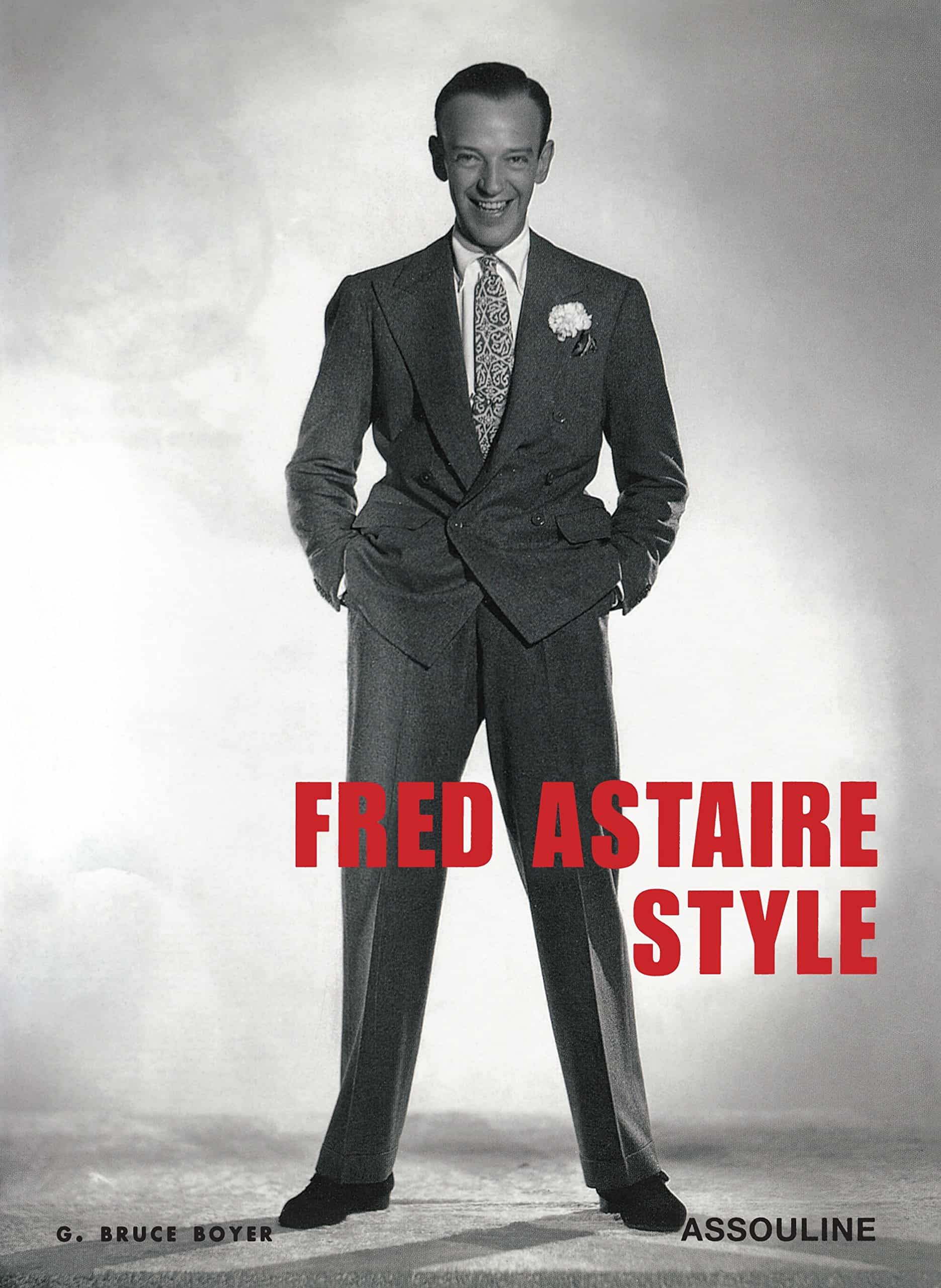
Fred Astaire Style by G. Bruce Boyer
A Focus on Softness and Comfort
Jackets had to be roomy enough not to be constricting but to still hold their shape. Trousers had to be cut on the full side, but not sloppy or billowy. From Astaire, A new aesthetic evolved, and so did the relationship between clothes and attitude, style and demeanor. During the Depression, this aesthetic became the mid-Atlantic model: a blend of Savile Row with Princeton. In other words, Astaire was able to seamlessly combine the hallmarks of traditional English tailoring with a more contemporary American prep style. Astaire had ample exposure to both of these traditions, as he had been a Brooks Brothers customer since his teens, and his travels while on stage in London had introduced him to Savile Row.
To follow this dual emphasis on form and function, Astaire chose supple weights of fabric to enhance the drape of his suits and in particular, he always made sure that his armholes were cut particularly high to maximize his movement, especially when dancing. This was particularly true of his full-dress ensembles, which were often made by Anderson & Sheppard. While many men assume that white tie must be inherently uncomfortable to wear, with its high starched collar and exacting cuts, Astaire definitely proved this assumption to be false.
Suits
Fortunately, we do not need to speculate on Astaires opinions about specific different kinds of garments, because he gave these opinions to interviewer Richard Hubler in a 1957 piece for Gentlemans Quarterly. In terms of suits, he typically preferred traditional, staple hues, like navy blue and charcoal grays and browns. The only light color I like is light gray, he said. Meanwhile, his choices for combinations of a blazer or sport coat with odd trousers could often be a bit more bold, and incorporate patterns. In either case, he did prefer that his jackets usually have deep side vents, often up to seven inches or so, in accordance with traditional British styling.
Trousers
His trousers were usually both pleated and cuffed, although he did wear them shorter than many men of the time, with little or no break. He said, I do not want them slopping over onto my shoes. Another reason for a shorter trouser break was to draw more attention to his feet while dancing in films. He also accomplished this by wearing socks (and sometimes shoes) in contrasting colors to the trousers. While he did prefer a shorter hem, Astaire also preferred for his trousers to have a higher waistline. This made his legs look longer and more athletic, and made him appear taller overall, even though he was only about 59.
Shoes
Of course, shoes were the workhorses of Astaires wardrobe. He was often said to go through dozens of pairs while rehearsing for a show or a film, and in terms of his own private collection, he often preferred two-tone spectator shoes, or oxfords in either white buckskin or brown suede.
Shirts
Astaire purchased just as many off-the-rack shirts as he had custom made. In his time, the style was for shirts to fit more generously in the chest and sleeves than they do today, so a slightly looser fit that one would typically get off-the-rack would not be seen as sloppy. Still, his shirts did fit him well for his size. He would occasionally wear patterned shirts, in something like stripes, but he was most partial to solids in pastel colors like blue, yellow, and a personal favorite of his, pink. Solid pastel shirts, by the way, are a maximally versatile option for pairing with all different manners of ties and jackets, as well as accessories.
Overall, he preferred button-cuff shirts to ones with French cuffs, and would typically wear cufflinks only with formal dresswherein they, as well as the shirt studs, would often contain precious gems. He disliked tab collars, often preferring button-down collars or spread collars strengthened with collar stays. When he did choose to wear a traditional point collar, he would often accentuate it by wearing a collar pin, clip, or bar.
Ties & Bow Ties
In terms of ties, he preferred tying a Windsor knot, and often opted for fuller, wider ties. He explained in that 1957 interview that he avoided narrower ties because, I am narrow enough myself, too narrow. While he was a bow tie wearer in his younger years, Astaire later settled into wearing primarily long neckties, and then in his later years, wearing neckerchiefs and ascots. Another use of neckwear for Astaire was one that would become a personal hallmark for him: using old ties or handkerchiefs as belts. This came from his dancing days, when his weight would fluctuate so rapidly that belts would be impractical at keeping up his trousers.
Other Accessories
Also a fan of colorful pocket squares, Astaire would usually wear them in more casual folds, rather than something highly structured. Other than collar pins, tie bars, and occasionally a ring, Astaire did also like to accessorize with boutonnieres, particularly carnations. In hats, he liked models with low crowns and fairly narrow brims, usually of about 2 1/8 inches. According to him, an eighth of an inch can make a lot of difference in a brim. And while he obviously wore top hats with his full-dress and morning-dress ensembles, his everyday choices were felt fedoras and straw boaters, often accented with colorful grosgrain hatbands.
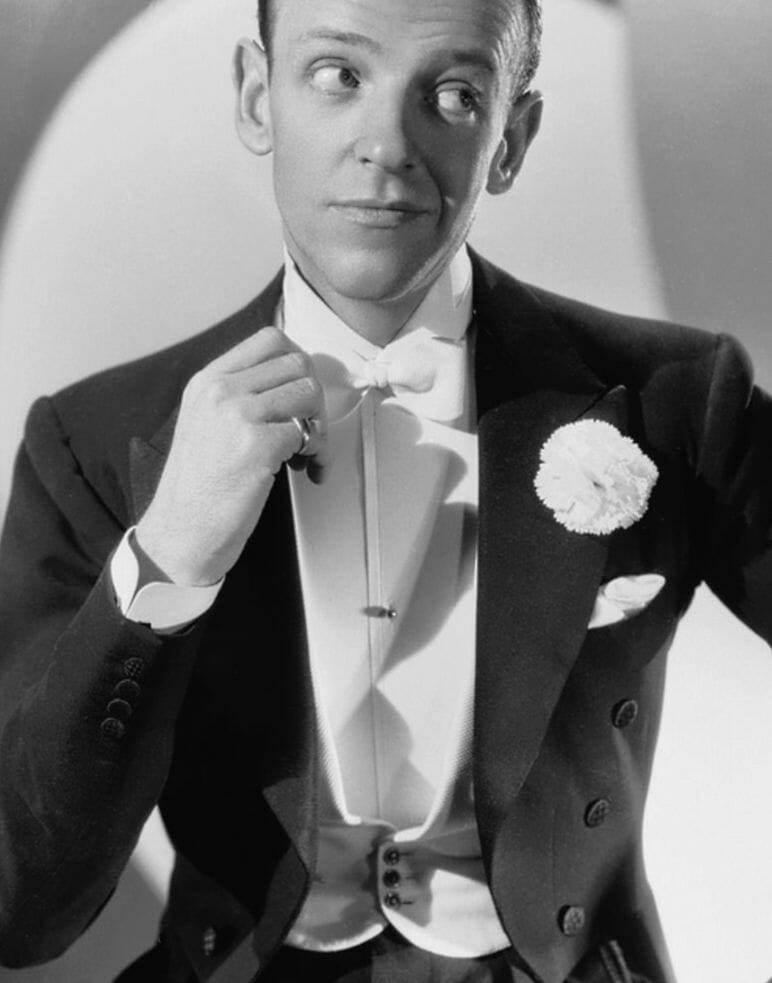
Fred Astaire circa 1936 wearing the popular white pearl shirt stud and the periods novel black waistcoat studs.
The Fred Astaire Attitude
With all of this said, how can one effectively emulate Fred Astaires style? The easiest way to do it, of course, would be to just directly follow all of the points weve laid out here. Equally important to the garments themselves, however, is the attitude with which they are worn. As weve already said, while Astaire did not shy away from incorporating patterns into his shirts or accessories, he was able to assemble outfits with what can honestly be called an artists eye. His combinations were always harmonious, and while they could be playful or even bright, they were never ostentatious or over-the-top.
While he was always smartly attired, Astaire took pleasure in his wardrobe and fundamentally dressed for himself. As he was quoted in the aforementioned 1957 interview:
I know that once in a while I have been on lists of best-dressed men, but it always comes as a surprise to me. I never think of myself as spic-and-span or all duded out, just as someone who wants to be comfortable and satisfy his own taste.
As for wearing white tie like Astaire, remember that the fit must be immaculate, ensuring ease of movement. Even so, as he admitted in his autobiography, Steps in Time, At the risk of disillusionment, I must admit that I do not like top hats, white ties, and tails. If you are looking for print resources to study up on Fred Astaires style, we would again recommend G. Bruce Boyers book, Fred Astaire Style, as well as Astaires own autobiography.
Conclusion
Fred Astaire created a unique blend of functionality and flair. Due to his classic-first-quirky-second leaning, his style has truly stood the test of time. Again quoting from Boyer:
He could wear the uniform of the upper class when the need called for it, but its ironic that the man some associated with the top hat and tails is really the one who popularized the sports jacket and soft lounge suit. Astaire wore white ties and tails as though they were pajamas, and a tuxedo as though it were a part of his everyday routine..It was not supposed to look perfect, it was supposed to look natural. It worked then, and it works now. Its what genius and style are all about.


